Drought, brushwood growth or wildfire: challenges when planting a forest
24 July 2023
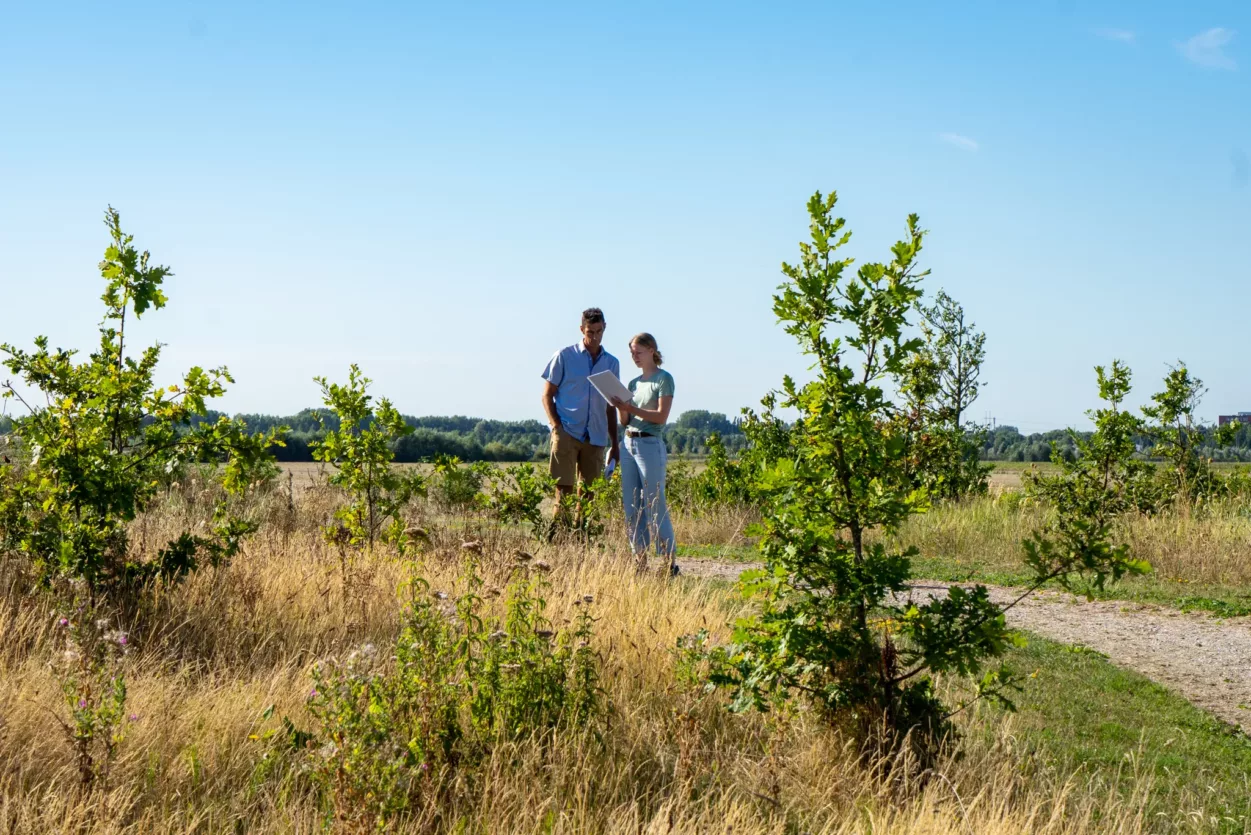
24 July 2023
Drought, brushwood growth or damage by animals: there are all sorts of challenges to be dealt with when planting new forest. How do we do that, together with our project partners? And how are we going to tackle the increasing risk of forest fires in the Netherlands?
Before we go into the challenges of planting a forest, it is important to know that at Trees for All we plant varied forests. These forests consist of various types of trees and bushes. Varied forests are better able to resist the effects of climate change, drought, diseases or pests. Will one species have a hard time? The rest of the trees will keep the forest alive.
For that reason, we often set out by planting a dozen or more species of trees and bushes. And we plant indigenous trees and bushes, which have grown in the Netherlands for centuries and belong here. They have proved to be able to stand hard wear and they are important to our native flora and fauna.
At the same time we can’t possibly prevent losing some of the trees. Or rather: a certain percentage of loss is part and parcel to planting new forest. Besides, we take the correct measures in order to limit losses as much as possible.
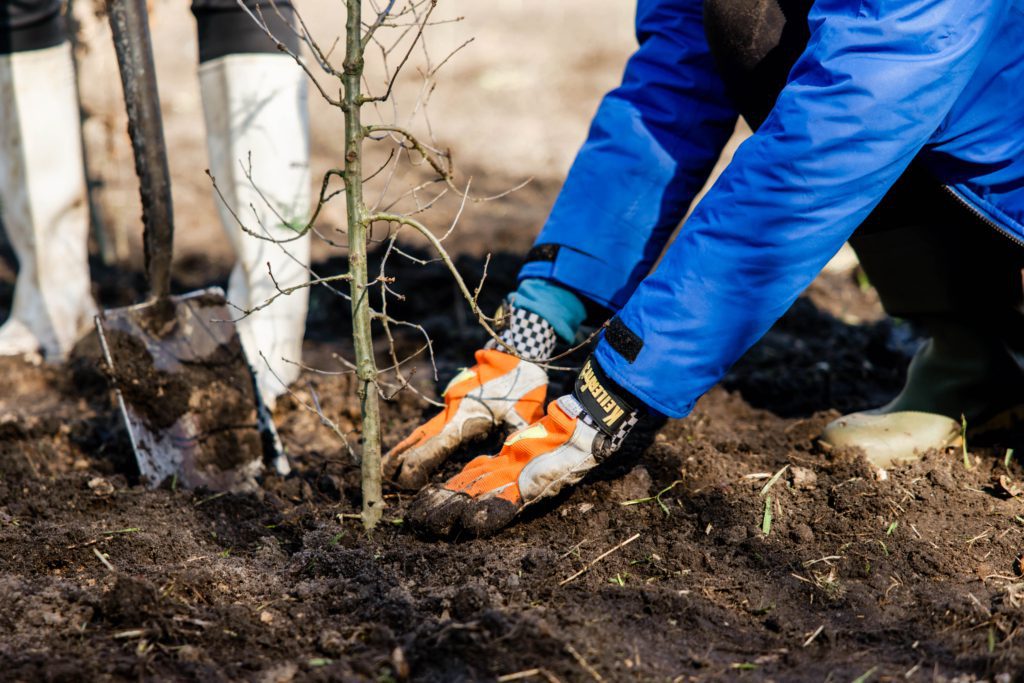
More and more often and even in the Netherlands, climate change makes us have to cope with different weather conditions, such as (extremely) dry summers with little rainfall. This may lead to the soil drying out. In that case, trees are no longer able to soak up water and they will die. Of course we try to avoid this as much as possible.
More and more often and even in the Netherlands, climate change makes us have to cope with different weather conditions, such as (extremely) dry summers with little rainfall. This may lead to the soil drying out. In that case, trees are no longer able to soak up water and they will die. Of course we try to avoid this as much as possible.
For that reason, our project partners take various measures, dependent on the planting locations. Some partners will sow the areas with grain (rye, for instance) or a grass/herb mix. After germination, this will cover the soil and protect it from drying out One other advantage is that this protection often boosts biodiversity: grain, grasses and herbs will attract all sorts of plants and animals.
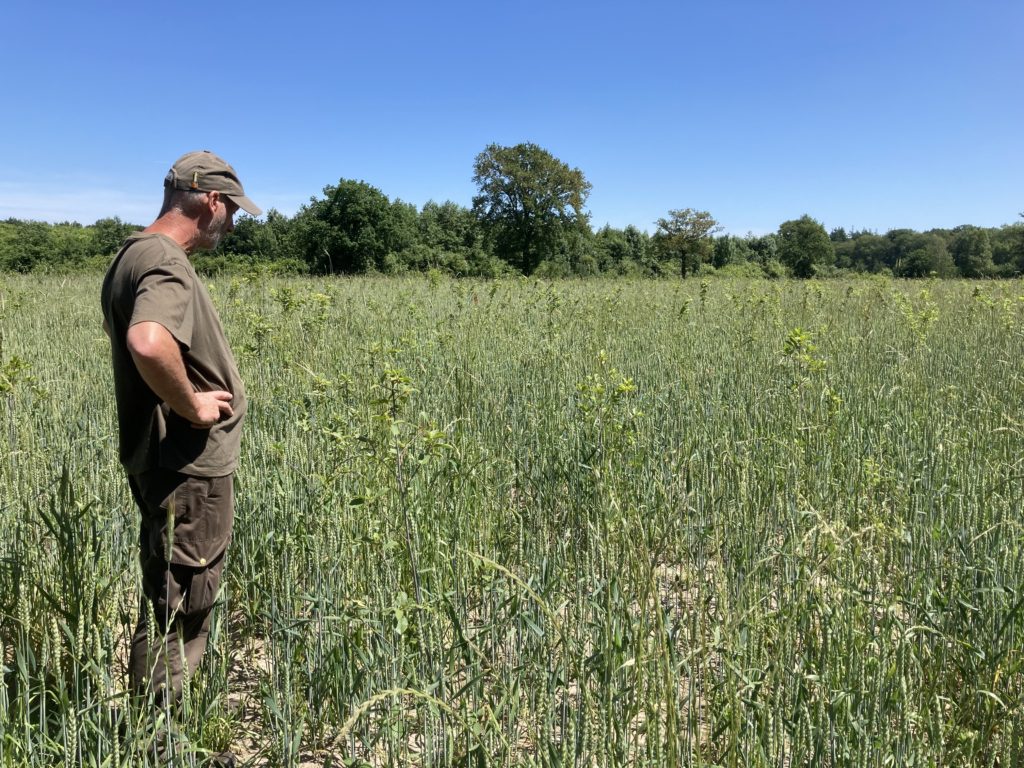
Sometimes trees are planted in soil which is limited in life and structures, such as former agricultural fields. In such cases it is sometimes necessary to treat the soil beforehand with compost: organic matter and minerals. These fertile supplies also make the soil soak up more rainwater and retain it longer, giving the young trees a strong start!
In some of the places where we plant trees, the grounds are heavily overgrown with brushwood. This means here we find such weeds as brambles, stinging nettles, thistles and catchweed. Such vegetation often hampers the growth of young trees. More strongly so, the young trees may even be suffocated. They do not get enough light and space to grow properly.
In such cases it may be necessary for our project partners to mow away the brushwood. This literally provides growing space for the young trees. After one or two years, mowing will no longer be necessary as the young trees will be tall enough to withstand brushwood and similar vegetation. The bottom growing layer causes the soil to dry out less quickly and it becomes a habitat for all sorts of insects, birds and small mammals.
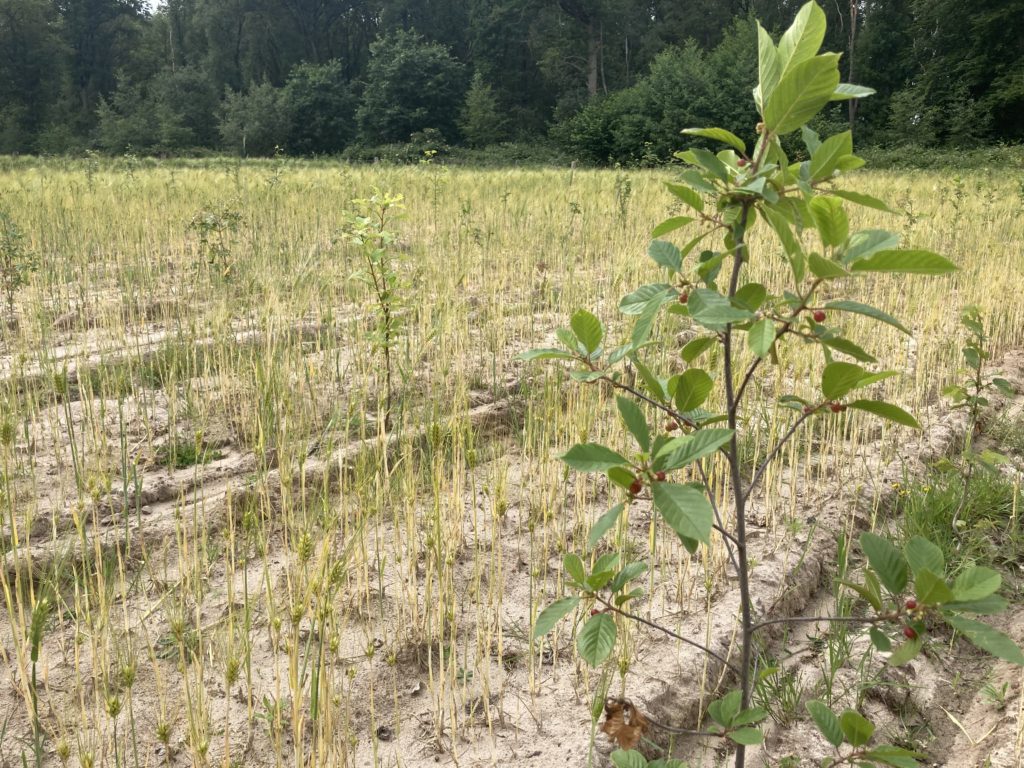
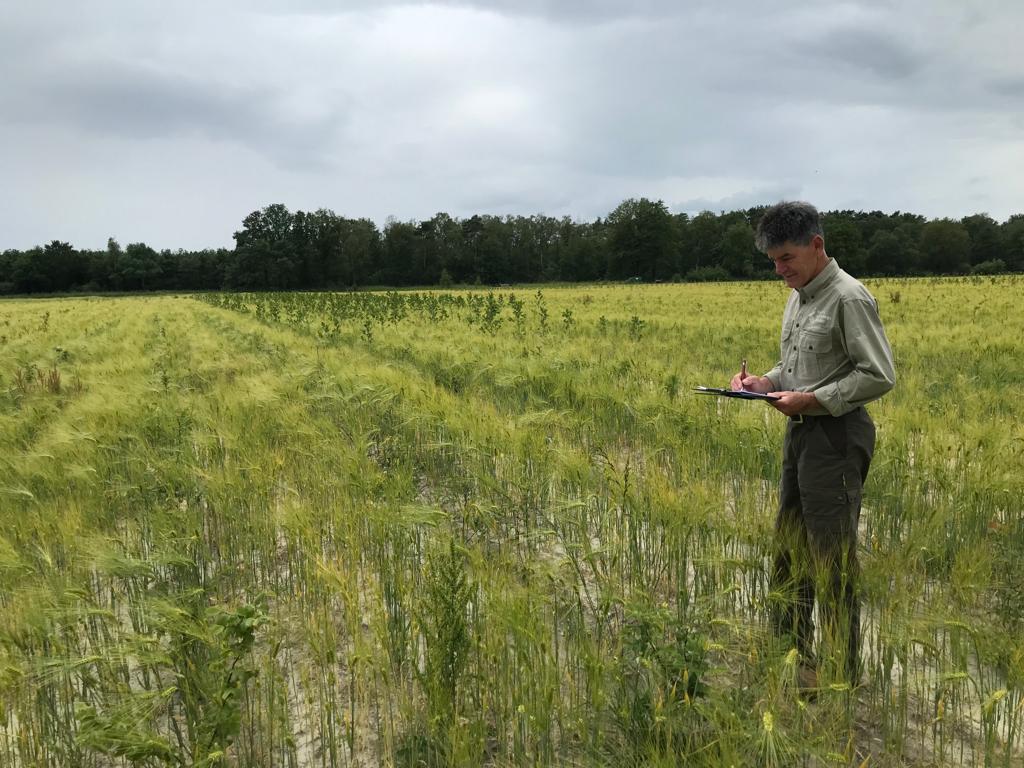
A different option to fight brushwood is by sowing grain in the location where we want to plant trees. Our project partners Het Limburgs Landschap and ARK Rewilding Nederland do so. Grain, such as winter rye prevents brushwood from growing in the planting location. The grain is sown less densely than it would be in a regular agricultural field, so that there is enough space left for trees to grow.
Another advantage of grain is that it prevents the soil from drying out. It forms as it were an extra protective layer, because of which the soil dries out less quickly. As the trees grow bigger, they will push out the grain by themselves.
Another cause why trees sometimes do not survive their first phase is damage by animals. Deer or roe, for instance, are fond of young trees. Certainly so when food is scarce in the surroundings! These animals often rub their heads against tree trunks in order to mark their territories or because they are itching. Even though damage by rubbing may be visible for a long time, it seldom causes a tree to die.
Most trees are namely tougher than you may think. Does a deer or roe eat a twig? The remaining twigs will simply continue to grow. And what if they devour the top of the tree? The side shoots of the tree take over its growth. Once a tree reaches a height of 6 feet, roe or deer can no longer reach its highest loots. We call this height the damage level. From this point upwards trees can grow up without much difficulty.
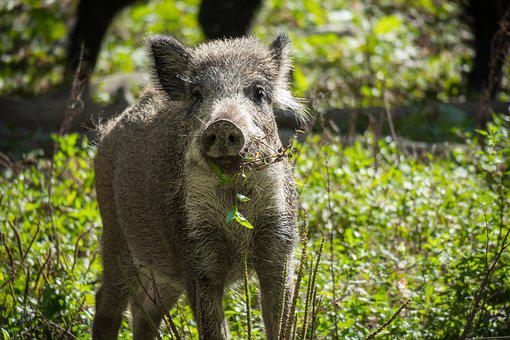
In order to prevent damage by animals as much as possible, we decide, together with our project partners, if the planted trees need any further protection. Forest managers may protect the young planting, e.g. by means of special sheaths or canes of bamboo. A different option is placing a temporary fence around a section of forest.
More and more often and even in the Netherlands, climate change makes us have to cope with lengthy periods of time with little or no rainfall. This increases the risk of wildfires. And contradictory as it may sound, planting new forest is exactly the way to stop fires from spreading.
In the past few decades many monocultures were planted in the Netherlands: forests consisting of a single or only a few species of trees. Forests of conifers, such as Norway spruce, are a good example. These conifer forests are highly flammable. Therefore we at Trees for All find it important to plant varied forests, with various sorts of trees and bushes. And especially: more broadleaf trees.
Broadleaf trees shed their leaves in the fall, leaving them bare in early spring, a period very prone to wildfire. The bare trees will not catch fire so easily and fires will spread less quickly.
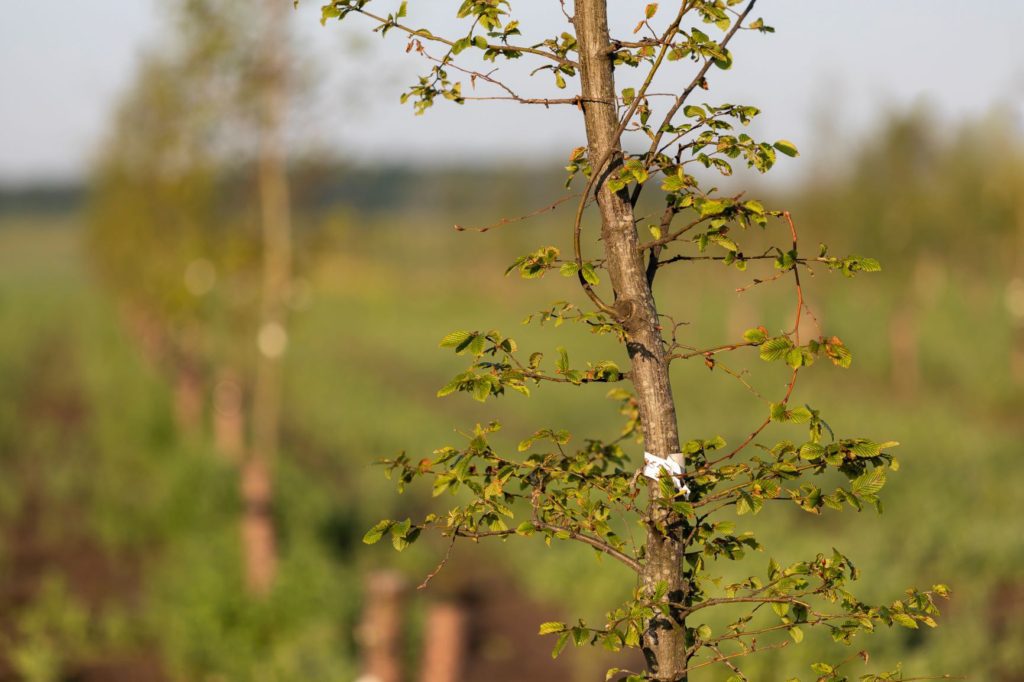
Forest management is one more important theme when it comes to fire precaution. This includes cleaning up dead branches along paths where many people walk or laying out fire lanes in places where there are no trees. Such fire lanes are really fire stoppers. It is impossible for flames to reach across a barren stretch and they will be extinguished. Our project partners, being responsible for forest management and maintenance, will supervise this.
Finally, it is good to know that not all trees in a forest will survive. It is all in the game. Only when there is significant failure, causing more than 15% of planted trees to die, will our project partners take action. In that case, open spaces will be replanted. This is called refill. The approach is especially necessary when specific species of tree and bush threaten to disappear, whereas they are important for variety, local climate and biodiversity.
Also in future, not all trees will survive. Trees struggle among each other for space and light. This may call forest managers into action, e.g. when an important species is in danger of disappearing. They may then decide to remove less important trees of which enough are available in the forest. In this way, the other species will also be given the opportunity to grow up.
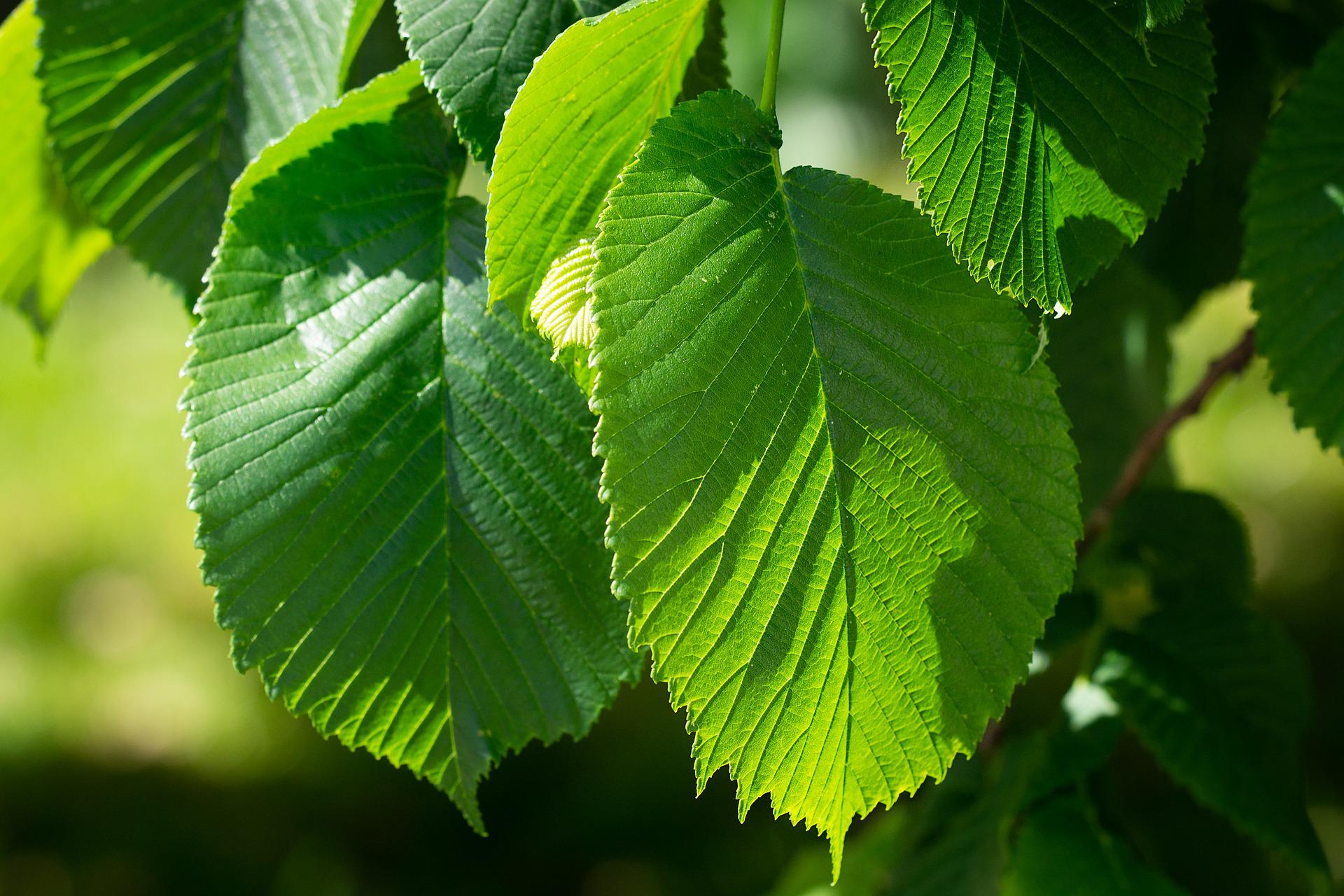
Would you like to contribute to living in a world full of trees? Plant them with us. For every tree planted in the Netherlands, we plant a tree abroad.
Plant with us